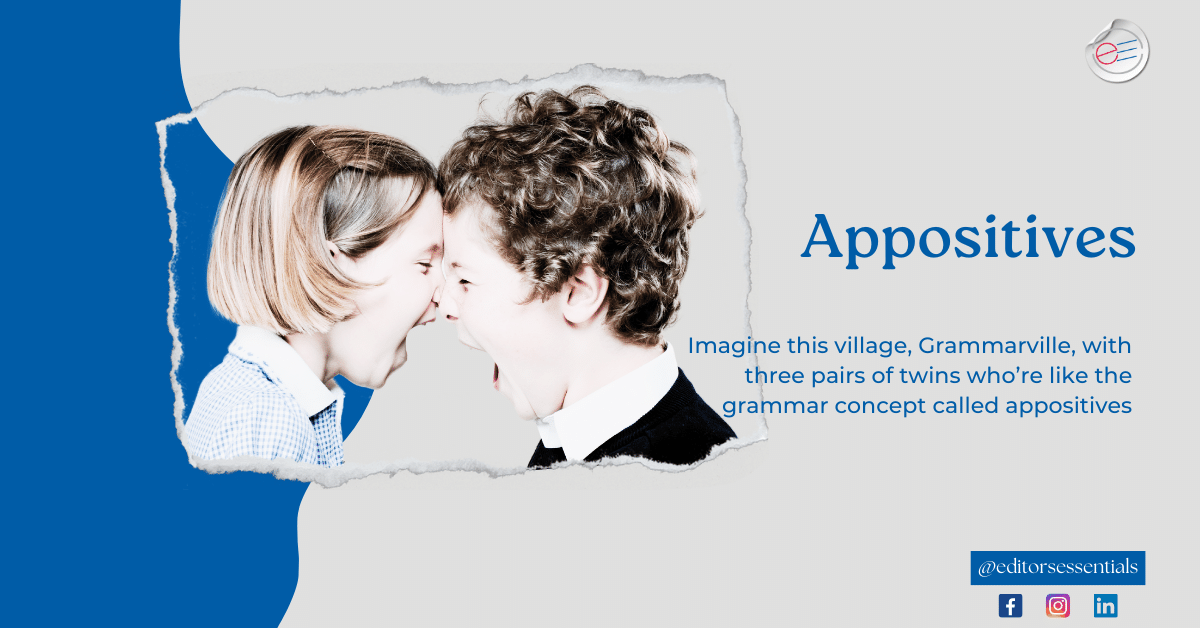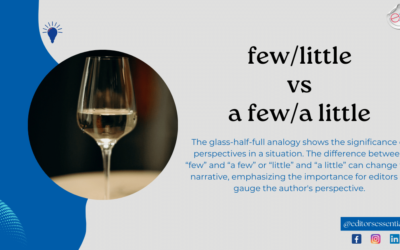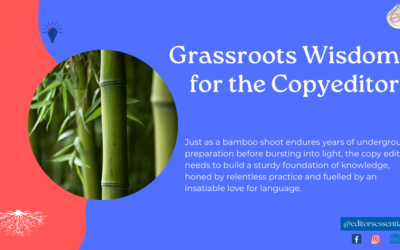Once nestled in the heart of a quaint village called Grammarville lived three pairs of twins, each weaving their own distinct tales within the close-knit community.
The first pair, inseparable female Siamese twins, shared not only a bond of sisterhood but also their beating heart. Medical advice cautioned against the perilous separation of these intertwined souls, leaving them in a unique position where each was wholly reliant on the other. Their mutual understanding and unwavering support for one another were a testament to the resilience of their unbreakable bond.
The second pair of twins, non-identical and of different genders, stood as a striking display of diversity within their kinship. While the boy carried an unassuming air, his twin sister radiated an undeniable magnetism, drawing attention wherever she ventured.

Their differences extended beyond mere appearance; one gravitated toward scholarly pursuits while the other thrived in the spirited realm of sports. Their social circles mirrored this dichotomy, revealing a stark contrast between the boy’s limited friendships and the girl’s widespread popularity, painting a vivid picture of their individuality.
Lastly, the village sheltered another set of twins – identical girls whose mirror-like resemblance often befuddled even the keenest of observers. Clad in identical attire selected by their playful parents, these mischievous sisters took delight in swapping identities, leaving their friends and even teachers perplexed.
Only their discerning parents held the key to their true identities, privy to the nuanced differences that set each girl apart in the midst of their charming resemblance.
These intertwined lives of the three pairs of twins added a fascinating layer of curiosity to the tapestry of Grammarville.
Table of contents
- A real-life example
- Appositives, the twins of Grammarville
- Essential appositives, the Siamese twins
- Non-essential appositives, the non-identical twins
- And here come the mischievous identical twins
- Practice quiz
Curious about how this story aligns with the grammar concept of appositives? You will know soon.
But before that, let’s look at a real-life example showcasing the use of appositives.
Appositives appear often in our day-to-day routines, perhaps in a familiar yet overlooked manner. Think back to the declaration column on most application forms – the one that reads as follows:
We all fill in our name in the blank space and affix our signature below the declaration. However, have you noticed a subtle difference? In some forms, the blank space is enclosed by a comma on either side, while in others, it isn’t. The question arises: which format is correct? Let’s explore further to uncover the answer.

I ________________ hereby declare that the information presented above is true to the best of my knowledge.
Appositives, the twins of Grammarville
Merriam-Webster’s dictionary defines the verb “appose” as
“to put before: apply (one thing) to another”
and
“to place in juxtaposition or proximity”
This definition illuminates how appositives (typically nouns, pronouns, or noun phrases) resemble the twin manifestations of a single noun in Grammarville.
Returning to our previous example, imagine John filling in the form. The declaration would then read:
I, John, hereby declare that the information presented above is true to the best of my knowledge.
In this instance, both the pronoun “I” and the noun “John” refer to the same person – the applicant. Therefore, they exist in apposition: the noun “John” serves as an appositive to the pronoun “I.”
In essence, an appositive supplements the noun or pronoun it follows.
While sometimes crucial for understanding the sentence’s intended meaning, other times, the information provided by an appositive may not significantly impact comprehension. This distinction leads us to categorize appositives into two types: essential and non-essential.
Essential appositives, the Siamese twins
Essential appositives, similar to the Siamese twins, cannot be separated from the referent and is essential for conveying its intended meaning.
Consider this example:
I have watched the movie Titanic many times but still cannot get over with the sad ending.
In this sentence, “the movie” (a generic noun) and “Titanic” (a specific noun) refer to the same thing. “Titanic” serves as an appositive to “the movie”, clarifying which movie you are referring to. Removing the appositive “Titanic” would leave ambiguity, as the listener/reader wouldn’t know which movie is being discussed, highlighting the necessity of an essential appositive.

Thus, much like the inseparable conjoined twins, essential appositives should remain connected without the use of parenthetical commas. Both the generic noun and the specific noun collaborate to provide a precise understanding to the listener/reader.
Notice that the generic noun (“the movie”) precedes the specific noun (“Titanic”), a common characteristic of essential appositives.
You might be wondering, what’s the answer to the application question: to add or not to add a comma (oops, can’t resist the to-or-not-to cliché). The Titanic example, however, is different from the declaration example we discussed earlier. We will see how.
Non-essential appositives, the non-identical twins
Non-essential appositives, unlike the essential appositives, offer additional but non-essential information in a sentence without altering its central meaning. Similar to the non-identical twins, the referent and the appositive are free to roam around independently. Even if they are seen together, no one gets confused. Consider this example:
One of my favorite directors is James Cameron, the director of Titanic.
In this instance, “James Cameron” and “the director of Titanic” are both the same person. The specific noun (“James Cameron”) precedes the generic noun (“the director of Titanic”), rendering the latter as non-essential information. The reader/listener can understand the reference without the generic noun’s aid, characterizing it as non-essential.

Distinct in their characteristics, non-essential appositives, much like the less-attention-grabbing twin, provide supplementary details without being essential to the sentence’s core understanding. The generic noun, similar to the less noticeable twin, follows the specific noun, often not drawing significant attention.
To set them apart, non-essential appositives are punctuated by parenthetical commas.
Consider another example:
Mr. Narendra Modi, Prime Minister of India, will inaugurate various projects in Shirdi this month.
Here, “Prime Minister of India” serves as a non-essential appositive, following the name “Mr. Narendra Modi.”
Be careful, though: we cannot do this with former prime ministers (and you know why)!
And here come the mischievous identical twins
Much like the mischievous identical twins playing “who am I” with you, context significantly influences the use of non-essential appositives, much like the scenario involving the third pair of twins. For instance:
My sister Gwen went to Mumbai yesterday to attend a training program on labor laws.
My sister, Gwen, went to Mumbai yesterday to attend a training program on labor laws.
So, which is correct and why?

This is where the mischief is played. You think it is non-essential and retain/add commas, the other one winks at you and says, “I am essential”. On another fine day, on another occasion, you think it is essential and remove the commas, you are fooled again!
Again, which is correct and why?
The Siamese twins say that both parts – the referent and the appositive – are important to convey the intended meaning. With that in mind, think if “Gwen” can be considered nonessential. In other words, does the sentence
My sister went to Mumbai yesterday to attend a training program on labor laws
lead to the follow-up question, “Which sister?” If not, then there is only one sister. In other words, the name is non-essential. If there’s a follow-up question, then the implication is that there is more than one sister, in which case the identification by name is essential.
Yes, I can hear you: “How, as a copyeditor, will I know whether the author has only one sister or more than one?” Similar to how you will ask the parents if you cannot distinguish the twins, ask the parent, er … the author!
Here comes the fun part: Below is a short quiz to test your understanding of appositives. Try them out. (If you are a registered user, your scores may be stored in your database; if not, they are not.)
Here comes the challenge part: This article has many Siamese twins and non-identical twins, I mean essential and non-essential appositives. Can you find them? Share your answer in the comments. (Psst… I will give you a head start: look at the title carefully.)
Disclaimer: We used ChatGPT to generate the introduction.






Really awesome. Informative. Looking forward to learn a lot of new things.
HAPPY LEARNING FOR US.
Thanks.
Thank you for the kind words 😊
This article on “appositives” is brilliant. Couldn’t have happened without the brain being raked. 👍
Thank you for the kind words and the great catches in the article – I have corrected them now. Thanks.
I learnt something new today! I never knew about ‘Appositives’. Thank you for the informative article. The quiz at the end was also quite challenging. Looking forward to learning many more new concepts like this.
Glad you liked the article and learned about appositives. More to come, stay tuned.